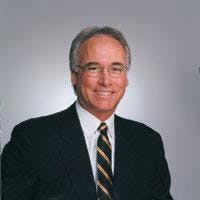An interview with Dr. Michael Unthank
John Jameson, DDS
Jameson Management, Inc.'s John H. Jameson, DDS, interviews Unthank Design Group's Dr. Michael Unthank on "designing the practice of the future." They address many of the significant questions on the minds of dental professionals throughout the world who are considering refurbishing projects or building a new office.
Dr. Jameson: What effect will technology integration have on dental facility design in the future?
Dr. Unthank: In the last 20 years, the general framework of the dental office has remained relatively constant. The challenge as we integrate technology is not only in dental devices, but how we handle the computerization infrastructure within the dental office. The changes I've seen require flexibility to distribute systems horizontally throughout the office. Too often, a problem occurs due to a new device that needs to be networked where there is no access. To drop down vertically or come up from below, we need access horizontally. Horizontal distribution space is critical. We need to start thinking about PVC raceways below the floors and interstitial areas above ceilings where we can distribute technologies that we may wish to incorporate now or at any time in the future.
Dr. Jameson: How do we consider privacy issues that come with these technological advancements?
Dr. Unthank: A lot of the open office systems we've seen were basically cabinetry solutions for separating dental chairs. These are falling by the wayside because you can't achieve adequate acoustic separation from room to room with them. HIPPA regulations, and the basic need for private interaction between dentists and their patients, mandate acoustic separation. Dental offices need barriers between treatment rooms and/or between dental chairs. We also need to provide background sound reduction. With technology integration, practice-management information may be on constant view on computer monitors in treatment areas; however, we don't want this type of information — such as another patient's account information — to be visible to patients. The actual use of a device indicates the appropriate positioning of that device. The information on these screens needs to be viewed only by the doctor and staff.
Incidentally, when I mention screens, I mean flat-panel monitors. The old TV tube type CRT monitors do not communicate that you have a technologically advanced office. They are technological dinosaurs. Flat-panel monitors allow lighter weight support arms, creating a much more open and airy feeling with a less institutional connotation.
Dr. Jameson: What input have clinicians given you about expressing a practice's image through design?
Dr. Unthank: All dentists will have to integrate technology at some point. Whether they do it on day one or day 1,001, they all at least want the capability to expand and integrate their systems. Without exception, the image we suggest clients portray is, "We are state-of-the-art, this is an attractive office, and you will receive only the finest care."
Begin with the front desk. When a patient walks in, there should be a flat-panel monitor or monitors, not the old cathode ray tube. This alone signals to patients that your office is technologically current and enhances their perception of the quality of care they receive. This image needs to be consistent throughout the facility. It really doesn't matter how many high-tech delivery devices or ancillary pieces of dental equipment you have. When patients see flat panel monitors at the reception desk, in the treatment room, and in the consultation room, it communicates they are in a high-tech office.
I don't ever want to create a debt burden for clients for the duration of their careers. We have to strike a happy medium. Dental and specialty offices are expensive projects because they are so systems intensive. The first step is to make sure the walls are in the right places so the technology can be integrated as needed.
Dr. Jameson: You briefly addressed the investment issue. Do you see a trend among clinicians to share facilities to make financing this type of facility more comfortable?
Dr. Unthank: Some of this space sharing can be achieved through what Dr. Phil Whitener terms "solo-group" — sharing a facility, but not being there at the same time. Or, there's the more conventional method of two or more doctors sharing a larger office and practicing at the same time. What has to be considered first is the personality match of the doctors. Most people are attracted to dentistry because they like the idea of running their own ships. Bringing in another doctor and additional staff adds personalities to the mix, creating a greater potential for friction. Because dental and specialty offices are expensive to build, there is a tendency to spread the cost among multiple practitioners. With more doctors, the number of treatment rooms obviously increases, along with supply storage, the sterilization area, etc.
The private spaces the doctors use are also a crucial consideration. We tend to need our own space in which to be other than the meticulous people we are in the treatment room — a place where we can cope, make a mess on occasion, have private conversations, take a quick phone call, or concentrate. So, I suggest each practitioner have his or her own private space within the office framework.
Dr. Jameson: Considering HIPPA regulations on privacy and how that affects case presentation, do you see a need for increasing case presentation space?
Dr. Unthank: It depends on the personality of the doctors and how they plan to present treatment. In architecture we call that "design program" content. The design program is actually a written document that defines how you intend to practice, which may be different from how you practice in your current facility. It requires practitioners to have a vision for their practices to ensure that five years from now they have everything they want in their facilities. You may phase into this final form, but again, it just depends on what you ultimately want. For example, if you're comfortable doing case presentations chair side and would be uncomfortable presenting in a more formal setting, then you might continue with chair side case presentations as long as they are confidential and private.
Doctors who want a nonthreatening setting for the case presentation are best served with a separate case presentation room or consult room. That room should allow the doctor to enter from the treatment side without passing through the reappointing or payment area. Patients and staff members can enter the consultation room from the more public side, without intruding upon the clinical area. Technology integration also is an important consideration in case presentation rooms.
A round table with four chairs in the middle of the room does not easily accommodate technological support, such as a computer terminal for patient education. It may make more sense to have a peninsula-type table extending from a counter along the wall so that everyone involved in the consultation can share the monitor. It's also much easier to manage the wiring required with this arrangement.
For financial arrangements, you may want a private space near the front desk. This allows patients who need to consult about financial matters complete confidentiality. The financial coordinator may then assist these patients with their particular situation in a private, comfortable setting.
Dr. Jameson: Presentation styles change and doctors adapt their own methods for this area of dental practice. This, in turn, changes the treatment mix and therefore the design of the practice. Spa dentistry, pampered patient concepts, and/or other practice additions are becoming common. How does this affect design concepts?
Dr. Unthank: Again, it's going to be a function of how the doctor(s) prefer to practice. Certain services should be standard within practices to convey that we understand and care about the patient's experience within the office. It can be as simple as providing a warm moist towel and a mirror following impressions so patients can freshen their appearance before returning to the waiting area.
The design program is an all encompassing, written document that defines how you intend to practice, which may be very different from how you have practiced in the past. It is the guideline for communicating your needs and desires to those assisting with your office plan, and it must be determined before design actually begins. This is the process through which each office develops an appropriate and unique reflection of the doctor's personality!


